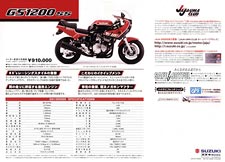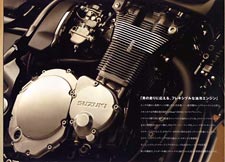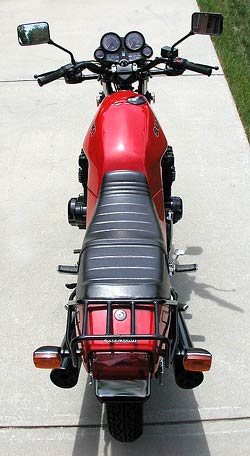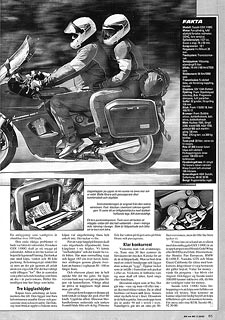|
|
||||||||||||||||||||||||||||||||||||||||||||||||||||||||||||||||||||||||||||||||||||||||||||||||||||||||||||||||||||||||||||||||||||||||||||||||||||||||||||||||||||||||||||||||||||||||||||
| главная ликбез новости мотокаталог форум мототюнинг кастом чоппер статьи карта сайта закажи мотоцикл | ||||||||||||||||||||||||||||||||||||||||||||||||||||||||||||||||||||||||||||||||||||||||||||||||||||||||||||||||||||||||||||||||||||||||||||||||||||||||||||||||||||||||||||||||||||||||||||
|
|
||||||||||||||||||||||||||||||||||||||||||||||||||||||||||||||||||||||||||||||||||||||||||||||||||||||||||||||||||||||||||||||||||||||||||||||||||||||||||||||||||||||||||||||||||||||||||||
 |
 |
 |
||||||||||||||||||||||||||||||||||||||||||||||||||||||||||||||||||||||||||||||||||||||||||||||||||||||||||||||||||||||||||||||||||||||||||||||||||||||||||||||||||||||||||||||||||||||||||
 |
|
 |
||||||||||||||||||||||||||||||||||||||||||||||||||||||||||||||||||||||||||||||||||||||||||||||||||||||||||||||||||||||||||||||||||||||||||||||||||||||||||||||||||||||||||||||||||||||||||
| Suzuki GS1100-1200 | ||||||||||||||||||||||||||||||||||||||||||||||||||||||||||||||||||||||||||||||||||||||||||||||||||||||||||||||||||||||||||||||||||||||||||||||||||||||||||||||||||||||||||||||||||||||||||||
| Suzuki GS1200 | ||||||||||||||||||||||||||||||||||||||||||||||||||||||||||||||||||||||||||||||||||||||||||||||||||||||||||||||||||||||||||||||||||||||||||||||||||||||||||||||||||||||||||||||||||||||||||||
|
Suzuki GS1200SS история модели 2001 - 2002
В начале восьмидесятых, когда Suzuki впервые представила свои мотоциклы объемом более 1000cc, японцы на внутреннем рынке в Японии не могли их купить. Правила запрещали продажу мотоциклов с объемом двигателя больше, чем 750cc. И это неудивительно, Катаны 1100cc и другие мощные спортивные мотоциклы восьмидесятых хорошо продавались в течение десятилетия в Европе и США и лишь после того, как эти модели насытили западный рынок, запреты, наконец, были сняты, поскольку ностальгический дизайн по-прежнему был востребован на родине, в Японии.
Необходимо отметить, что новый GS1200SS является всего лишь
современной версией модели GSX-R1100 восьмидесятых годов.
Другими словами, это спортивный мотоцикл для тех, кто мечтал об
этом, но не мог его получить дома.
GSX-R1100
был представлен на внутреннем рынке в 2001 году, и стал
доступен в черном и красно-черном цветах.
RedfoX GS1200SS Yoshimura(-02)FULL SYSTEM HAND BENT TITANIUM CYCLONE
2001 Suzuki year code: K1
2002 Suzuki year code: K2
|
||||||||||||||||||||||||||||||||||||||||||||||||||||||||||||||||||||||||||||||||||||||||||||||||||||||||||||||||||||||||||||||||||||||||||||||||||||||||||||||||||||||||||||||||||||||||||||
| Suzuki GS1150 | ||||||||||||||||||||||||||||||||||||||||||||||||||||||||||||||||||||||||||||||||||||||||||||||||||||||||||||||||||||||||||||||||||||||||||||||||||||||||||||||||||||||||||||||||||||||||||||
|
Suzuki GS1150E история модели
1984—1986
1984 Suzuki GS1150ES, year code: E
Suzuki launches the first missile in the Superbike War of '84 There's no stopping it now. The first shot has been fired, and there won't be peace in the world of motorcycling until the last battle has been decided. I The Superbike War of 1984 brings to the conflict the most awesome weapons ever to roll out of showrooms and onto the streets. It pits the most innovative, potent motorcycles in history against each other, and they come to the battlefield in numbers never seen in any previous performance war. Every major manufacturer has at least one new high-performance weapon. Honda has two new superbikes to add to its V65 Magna, and the addition of the GPz900R to its line gives Kawasaki a total of three road rockets. But Suzuki arrives at the battlefield first, and considering the 49.4 percent tariff that must be paid on imported big bikes, the company has come in with a formidably low price. The GS1150 hit California Suzuki dealers before the end of '83; some of its competitors may not arrive until mid-April. It costs $4785, a cut below the prices set or hinted at by other manufacturers. In the battle for sales, at least, Suzuki has hammered out important advantages. In the GS1150 the company also has a formidable—perhaps unbeatable-combatant in the horsepower war. You want to know just how potent Suzuki's latest weapon is, right? How's this? On his third launch down Carlsbad Raceway, Jay "PeeWee" Gleason shot through the timing lights at 127.8 mph just 10.61 seconds after dropping the clutch back at the starting line—and this was despite a slippery rear tire that greatly reduced traction on the already slippery starting area. Correcting those figures to reflect times for standard temperature and pressure at sea level, the 1150's time computes to 10.56 seconds at 128.6 mph. Our official time for the GS1150, the one recorded by Road Test Editor Jeff Karr, is 10.73 seconds at 126.8 mph, which corrects to 10.68 seconds at 127.5 mph. This is by far the quickest bike we've tested, despite the bad traction. It's hard to make accurate comparisons with previously tested superbikes because they were all run at the defunct Orange County International Raceway, which is universally regarded as a faster strip with better traction. The quickest of the bikes tested there was the Kawasaki 750 Turbo, which Karr launched to a best run of 10.99 seconds at 123.2 mph and which the Master, Gleason, fired through the quarter-mile in 10.70 seconds. The best times for normally aspirated bikes at OCIR were 11.07 seconds at 123.5 mph for the Kawasaki GPz1100 and 11.10 seconds at 122.6 mph for the '83 Suzuki GS1100 Katana. While it may be difficult to establish an exact comparative figure, it is clear that, even without the benefit of correction, the GS1150 ushers in a new era of acceleration, power and engine performance. Gleason's professional assessment is that, on a better strip, the GS1150 would run the quarter in well under 10.5 seconds. As detailed in the accompanying technical discussion, the GS1150 engine is essentially a reworked, breathed-on GS1100, and the family resemblance is obvious in its feel, sound and response. The extended valve timing and increased lift have shifted the power up the rev band slightly. The engine generates a noticeable increase in power at high rpm over the 1100 but feels' comparatively less forceful at moderate rpm. However, whatever effect the altered camshafts have had on midrange rpm is offset by the increases in displacement and compression. The overall result is similar to power characteristics of the 1100 engine below about 7000 rpm but with more power and acceleration at the top of the rev band. The 1150 is happy to accelerate right past its redline, which is set at 9000 rpm. If you don't pay attention or don't have a chance to shift, it will run up past 10,000 rpm. Suzuki's big four is still the most potent torquer on the road, however. It recorded a top-gear roll-on speed of 90.5 mph after a 200-yard run from 50 mph. The '83 Katana was the best top-gear puller previously tested, scoring a roll-on speed of 87.6 mph. Although slightly faster to warm up than the 1100, our 1150 was still jetted on the lean side. It surged slightly on cold nights at cruising speeds, but responded cleanly when the throttle cable was jerked. Light-handed drones at highway speeds routinely yielded fuel mileages exceeding 50 mpg. During racetrack testing and high-speed sprints through some of our favorite kinky canyons, mileage dropped to less than 30 mpg. The clutch worked flawlessly during the evaluation. Most staffers found no fault with gearshifting, either. However, a couple" noted instances when the shifting mechanism became slightly balky during a series of downshifts and seemed to have problems indexing between shifts. Neutral finding was easy and was aided by the big digital gear indicator. There was an average amount of lash in the drivetrain that some riders objected to in slow first- or second-gear turns where they were trying to roll the throttle on gently and evenly. In general, we preferred the 1135cc engine to the old 1074cc mill. However, one engine-related area that most evalua-tors criticized was vibration. Between 60 and 65 mph in fifth gear, our bike produced a band of vibration that annoyed all but one rider enough to provoke firm negative comments. Some complained it made their feet uncomfortable; others were more aggravated by the buzz in their hands. Everyone agreed the vibration occurred at a bad point. Otherwise, the 1150 was surprisingly comfortable, even with its built-for-speed riding posture. A few riders wished for a little less weight on their arms or hands on long touring-type rides, but the riding position was well received in other respects with the bar-peg-saddle layout getting high marks all around. Although the two-piece seat felt hard at first and seemed rather sharp-shouldered, it didn't get any harder after a few hours in the saddle if anything, it felt softer. It is flat and roomy enough for almost everyone, and the rise to the passenger seat provides some support during acceleration without crowding you into the bars or limiting space for position changes. Even with the tautened suspension, the 1150 rides quite well. The suspension rates are a good compromise between the demands made for comfort and cornering control. There is also a wide latitude in the available adjustments. The GS1150's fairing is wider and offers more wind protection than wind-splitters on other current sport bikes. It protects your hands and legs from direct wind blasts and also keeps most of the wind off your torso. A little more wind rushes past your helmet than on some other bikes, but it is a smooth rush that most of us find much less annoying than a lighter but more turbulent windstream. By diverting the wind away from the rider, the fairing makes the ride quite comfortable at the very high speeds at which the 1150 easily cruises. Suzuki has armed the GS1150 with a chassis just brimming with useful components and potential. Most of the components and systems work well, but handling is marred by a few problems that could have easily been avoided. The steering has been quickened fractionally compared to the GS1100 by the switch to the 16-inch front wheel, and the GS1150 steers with greater certainty and precision than the 1100 ever did. The chassis feels more rigid and responsive than the 1100's and is very stable at all speeds. The American Road Racing Association graciously allowed us to partake of some of its track time during morning practice at Riverside Raceway, and the GS1150 proved it won't wobble or wallow while cornering at speed and it will track through turns precisely. Part of the stability comes from the high center of gravity, caused by the fairly high engine location. Considering that Suzuki's engine (which has its ignition and generator placed at the ends of the crank instead of behind the cylinders as on other new in-line fours) is wider than most of its competitors', the high engine placement may have been dictated by cornering ground-clearance requirements. Though cornering clearance is up to the standards of other big sporting bikes, the high center of gravity slows steering response and increases the effort required to pitch the 1150 into a turn at speed with the narrow (26 inches) handlebars. The high weight placement also causes the 1150 to sit up if you use the brakes while cornering. None of this should be taken to mean the 1150 is a truck during hard cornering. It definitely is not. However, brief introductory rides on the new Yamaha FJ1100 indicate that it steers more lightly and quickly without sacrificing any stability. On the other hand, the Honda VF1000 Interceptor seems to share some of the slow, high-effort steering found in the Suzuki. However, our impressions of both the Yamaha and Honda were taken from prototype models ridden only on the racetrack; they are subject (and likely) to change as we do more extensive riding on production models. One of the flaws of the GS1150's handling is the tires, which just aren't up to the power or handling loads the bike can generate. Exuberant starts spun the rear wheel much more easily and fast cornering had the tires slipping more than on similar machines. Although it was possible to drag components while cornering under trailing throttle, if we accelerated while leaning over, the rear wheel usually began to slide before anything touched down. The tire could not accept both heavy cornering and drive loads. An interrelated problem arises in the new anti-dive system. Although this new system, which is activated by fork travel instead of brake application, solves some of the traditional problems with Suzuki anti-dive brake systems, it creates new problems with suspension response. The trouble is that the system can't differentiate between fork movement that results from braking and fork movement caused by bumps, cornering loads, etc. The compression damping can be increased by any major movement of the fork. Unfortunately, you want normal,moderately damped fork response in some of these instances, especially when cornering hard through bumpy turns. With the GS1150, you sometimes get a suddenly stiffened front end that can't respond to bumps and that isn't giving 100 percent to keep the front wheel on the road. Combined with the 1150's mediocre tires, this can lead to sudden slides during fast cornering in a series of stutter bumps or through a gravity dip. Of course, if the bump is big enough and hit hard enough, the system's blow-off valve bypasses the anti-dive damping system. Part of the problem is the difficulty in predicting what will happen. With brake-activated systems, you can simply ease off the brake when you see a bump coming. But with Suzuki's Positive Damping Force (PDF) anti-dive system it is difficult to predict if the anti-dive will activate or whether a bump is big enough to trigger the blow-off feature and bypass the anti-dive. There is certainly little you can do to control it. Some riders found that shifting their weight as far forward as possible put enough pressure on the fork to activate the blow-off system, but the riding position was awkward and other control problems arose. Varying the anti-dive's settings changes the point where the extra compression damping cuts in and can reduce the percentage of bumps that cause problems, but it doesn't eliminate the situation. Once you have had the front end suddenly stop responding to bumps in the middle of a corner and have felt the front tire skitter, your confidence in the machine is likely to drop sharply. Fortunately, it should be possible to remedy the quirks of the front suspension or at least bypass the anti-dive system without too much effort. There are also plenty of good sporting tires available to fit the 1150. If we can hang on to our GS1150, we will try to remedy its only major problems and report our results in a month or so. Looking past the anti-dive's pitfalls, you discover an excellent suspension system, which provides both comfort and control. Altering the fork's adjustments is simplified by eliminating the valve on the 1100 which changed fork air pressure. Rear damping and spring preload change with slick remote adjusting controls on the left side of the bike just below the seat. The rider can easily reach them while riding, and they offer a useful range of adjustments, allowing the bike to adapt to the racetrack and back to the freeway with just a few twists of the wrist. As a general standard, we used the No. 2 settings on the springs at both ends and on the rear shock damping, moving up to the No. 3 settings (sometimes with No. 4 shock-damping settings) for more aggressive passes down twisting roads. We used maximum preload to quicken steering a trifle or shift a bit more weight to the front in an attempt to overcome some of the anti-dive's glitches. Although the 1150 has less steering lock than the 1100, it is still pretty easy to maneuver at low speeds without a lot of dabbing or back strain. Removing the anti-dive from the braking system has created a much more positive, solid feel in the brakes, which now use double-action calipers like the GS550's, and riveted rotors. The effort required to apply the front brake hard at high speeds is fairly forceful. To stop hard when you are going fast, you need a solid four-fingered squeeze, and it's difficult to be sensitive when pulling so hard on the lever. However, the power to lock the front wheel is there if you apply the necessary pressure. The rear brake is quite good, offering control and all the power needed, but as with the front, the tire is the limiting factor. Maintenance has been simplified from the 1100 in several areas. One long-overdue change is the emergence of the battery from beneath the airbox, where it has been hidden on big GS models since the GS1000. Another change is in the valve cover, which now has a reuseable neo-prene gasket. The valves can be adjusted simply by removing the fuel tank; the fairing need not be pulled. The tool kit, located in its tray beneath the passenger seat, can be easily reached by removing the rider's portion of the saddle. Installing the saddle (just the front half detaches) is easier than it used to be, too. Several miscellaneous items generated comments. The big headlight was universally applauded (although some of us wished for an adjuster in the cockpit), while the feeble horn was unanimously derided. Sloppy welds on the exposed portion of the frame (the hidden portion still uses round tubes) drew some fire. Al- though a couple of riders wished for more legible instrument numbers, the warning lights received warm reviews. We also like the fact that the oil temp gauge shows temperature rather than a limit. Reaction to the taillight/license-plate-light treatment varied. Everyone liked the "GP-style" gas cap, which gives-you a choice of locking or leaving it accessible. The wraparound rubber strips on the back of the tank give the 1150 a Katana flavor and function as knee pads, but some riders discovered that jeans sometimes caught on the edges. There will actually be two identical versions of the GS1150, both available in red and white or blue and white. In every state except California, it will be sold as the GS1150ESE, an '84 model. In California, it will be designated the GS1150ES3 and will officially be an '83. This permits Suzuki to slip it through a loophole in California's toughened smog requirements for motorcycles, but it also means the number of GS1150s for sale in California will be limited to those that get in under the deadline. There are three side effects to this ploy: 1) there will be no evaporative emissions canisters on California GS1150s; 2) the GS1150 will go on sale sooner than its competitors—in most cases three or four months before; 3) the GS1150 won't benefit from the 10 percent drop in tariff which occurs in April and which is one reason the other bikes will be introduced so late. It is therefore interesting to note that the 1150, at $4785, will apparently be priced below most of its competitors, even the made-in-U.S.A. Kawasaki GPz1100 ($4799). Honda's V65 Magna and Sabre may be priced below the GS1150ES, but the other big-motor sport bikes—Kawasaki GPz900R, Honda VF1000 Interceptor and Yamaha FJ1100—will probably be at least slightly higher. Suzuki has a great deal riding on the GS1150. It is its new flagship model. And as the only '84 model to debut thus far, it is responsible for drawing traffic to dealer showrooms where Suzuki is counting on selling a great many noncur-rent models this year. Perhaps most important, the 1150 carries the corporate banner into the Superbike War of '84 and is charged with upholding Suzuki's honor against the horde of all-new models massing just over the horizon. We predict the GS1150ES will do just fine. It has two significant flaws, but both should be easily solved. Beyond that it is an extremely fast, comfortable, exciting sport bike with precise, steady handling. It may not carry quite as many new pieces as some of its approaching competitors, but it offers a thoroughly proven engine design with many parts already stocked by dealers. Furthermore, it's here and the price is right. For someone in the market for a superbike, that can make the difference between three months of adrenaline rushes and taking up knitting. Source MOTORCYCLIST 1984
1985 Suzuki GS1150E, year code: F
1985 Suzuki full line brochure page from Canada. Click to enlarge. The '85 Canadian full line catalogue was scanned and sent to me by ”Geoff VH”. Here's the rest of the catalogue.
Note: The 16-valve GS1150E was known
outside USA/Canada as GSX1100E.
The 1150 is not your average motor scooter. Back in ’84, Suzuki bored out the GS1100 mill, upped the compression, played with cam timing, and launched the 1150E. Motorcycle magazines of the day promptly ripped off quarter mile times in the 10 second range, and proclaimed it the fastest bike of the year. With nearly 120 hp on tap, the 1150E was stout – to say the least. The ES model added the sport touring fairing, providing the rider with some protection considering the velocities the bike was capable of producing. This gorgeous example of the breed shows less than 4,000 miles on the odometer.
ENGINE TYPE: Four-stroke, DOHC, 4-cyclinders, 16 valves, Twin Swirl Combustion, Chambers (TSCC). ENGINE DISPLACEMENT: 1135cc BORE & STROKE: 74 x 66mm COMPRESSION RATIO: 9.7:1 CARBURETOR: Four, constant velocity Mikuni BS36SS LUBRICATION: Wet sump with oil cooler IGNITION: Transistorized STARTER: Electric TRANSMISSION: 5-speed FINAL DRIVE: #630 Chain, O-ring sealed OVER ALL DIMENSIONS: LENGTH: 2,240mm(88.2 in.) WIDTH: 740mm (29.1 in.) HEIGHT: 1,280mm (50.4 in.) SEAT HEIGHT: 785mm (30.9 in.) WHEELBASE: 1,550mm (61.0 in.) GROUND CLEARANCE: 155mm ( 6.1 in.) DRY WEIGHT: 237kg (522 lbs.)*California model 238kg (525 lbs.) SUSPENSION: FRONT: Air oil damped, 4 load settings, Suzuki "Posi-Damp Forks" (PDF) with anti-dive (4-way adjustment) REAR: Suzuki "Full Floater", oil damped, 4 damping adjustments, fully adjustable preload with remote hydraulic control, aluminum box-type swingarm BRAKES: FRONT: Dual slotted discs REAR: Slotted Disc TIRES: FRONT: 110/90 V 16, tubeless REAR: 130/90 V 17, tubeless FUEL TANK CAPACITY: 20 lit. (5.3 gal.)*California model 18 lit. (4.8 gal.) COLOR: Two tone - White & Red, Two tone - White & Blue
1986 Suzuki year code: G
|
||||||||||||||||||||||||||||||||||||||||||||||||||||||||||||||||||||||||||||||||||||||||||||||||||||||||||||||||||||||||||||||||||||||||||||||||||||||||||||||||||||||||||||||||||||||||||||
| Suzuki GS1100 | ||||||||||||||||||||||||||||||||||||||||||||||||||||||||||||||||||||||||||||||||||||||||||||||||||||||||||||||||||||||||||||||||||||||||||||||||||||||||||||||||||||||||||||||||||||||||||||
|
Душой и сердцем GS1100 является 16-клапанный, 1075 cc двигатель. Ни один другой двигатель не имеет столько запаса по мощности, как этот. Если какой-то другой производитель захочет устроит гонку гонке лошадиных сил с GS, она должен быть готов к изнурительной гонке за каждый кубический сантиметр, в то время как Suzuki потребуется лишь немного усовершенствовать GS1100, чтобы увеличить мощность.
Suzuki GSX1100EF история модели 1980—1987
1980 Suzuki year code: T
1983 Suzuki year code: D
1984 Suzuki year code: E
1993 Suzuki year code: P
|
||||||||||||||||||||||||||||||||||||||||||||||||||||||||||||||||||||||||||||||||||||||||||||||||||||||||||||||||||||||||||||||||||||||||||||||||||||||||||||||||||||||||||||||||||||||||||||








































































 GS1100GK,
тяжелый турист, основанный на GS1100GL, был выпущен в 1982 году в
основном для американского рынка. Модель была построена для того, чтобы
компенсировать пробел в покупке туристичесого мотоцикла для тех, кто
хотел, но не мог себе позволить купить туриста типа Honda Gold Wing.
GS1100GK,
тяжелый турист, основанный на GS1100GL, был выпущен в 1982 году в
основном для американского рынка. Модель была построена для того, чтобы
компенсировать пробел в покупке туристичесого мотоцикла для тех, кто
хотел, но не мог себе позволить купить туриста типа Honda Gold Wing.














